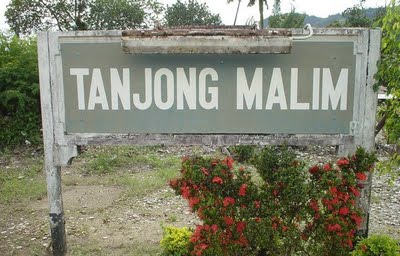by Eric Lim
Introduction
Just like the small town of Broga, Tanjong Malim is a border town. It lies at the boundary between Perak and Selangor with Sungai Bernam meandering across, serving as the divider. It is about 123 km from Ipoh, Perak’s capital, and 80 km from Kuala Lumpur, both via the PLUS Expressway/North-South Expressway E1. Traditionally, Tanjong Malim was a collecting and marketing centre for the surrounding rural population. This role is fast diminishing as Tanjong Malim is undergoing a process of rapid change. The establishment of the Proton industrial complex coupled with its recent RM 1.2 billion plant extension and with the upgrading of Institut Pendidikan Sultan Idris (IPSI) to Universiti Pendidikan Sultan Idris (UPSI), has transformed the once sleepy Tanjong Malim into a centre of manufacturing and high value services. It has become the main sub-regional centre of the Southern region of the state of Perak.
History
Sungai Bernam originates from Gunong Liang Timur on the Titiwangsa Range, which is a tri-border point between Perak, Selangor and Pahang. The river flows a distance of 216 km before discharging into the Straits of Malacca; around 65 percent of the river is located in Perak while the remaining in Selangor.
It was here at the Bernam Valley that the first slab grave (so named because the walls were constructed of large granite slabs) was discovered at Changkat Menteri, close to the bank of Sungai Bernam in 1895. It was later excavated in 1919 by H.C. Robinson, the then Director of Museums of the Federated Malay States (FMS) and R.O. Winstedt. Later, more slab graves were discovered, namely in Sungkai (1927 and 1930) and in Slim River (1936). The most recent discoveries of four slab graves were made by an archaeological reconnaissance team from Selangor State Museum headed by Associate Professor Leong Sau Heng. Two of the graves were located on a palm oil estate belonging to United Plantations at Changkat Menteri and the other two, also found near oil palm trees, at nearby Ulu Bernam. They were excavated in 1992 and 1993 respectively. Radiocarbon dating of the excavated graves has yielded dates from the 1st to 7th century CE.
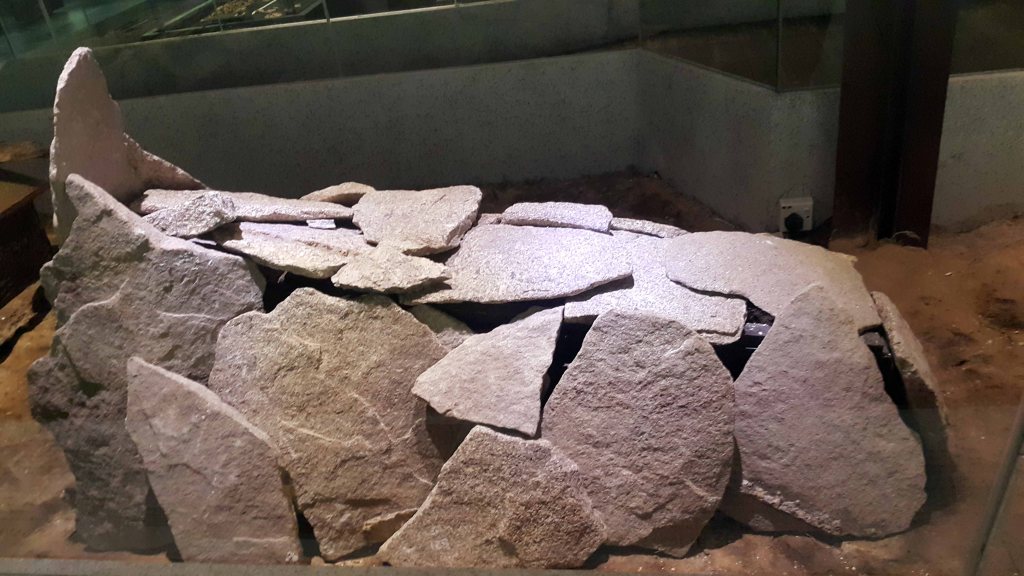
Tanjong Malim first started as a settlement on a large cape along Sungai Bernam in the 18th century. The early settlers were Bugis and they rehabilitated the area and at the same time, planted jambu fruit (guava) trees along the banks of the river. Hence, the place was initially known as Kampung Jambu or Tanjong Jambu (tanjong/tanjung is Malay for cape). During the Pahang Civil War fought from 1857 to 1863, many Malays fled to the neighbouring states Kelantan, Selangor and Perak. Dato Haji Mustapha Bin Raja Kamala, a Rawa chief from Raub led a group and landed at Kampung Jambu and when he was the Penghulu (Chief), he named the place Kampung Kubu. Under his leadership, he opened up land, developed markets for trading and personally contributed to the building of the mosque and Police Station. Local lore has it that a representative of the British government came for a visit and witnessed the local praying. Later, he had a chat with them and asked if there was a word for their religious devotion and obligations. The reply was the word “mu’allim or alim”. He then offered to name the settlement Tanjong Malim (T/M), a name that has stayed until today.
In 1885, the tax office and police station were shifted from Kuala Slim to T/M. In 1894, T/M became the sub district headquarters and Douglas Francais William became the first Assistant District Officer. In 1896, a road connecting to Kalumpang in the Ulu Selangor district was completed and in 1898, the first road in town was tarred. On 1 November 1900, the train section between Kalumpang and T/M was opened fulfilling the suggestion made by Frank Swettenham when he became the Resident General of the Federated Malay States in 1896 by linking the Perak and Selangor railway system. T/M reached its pinnacle in 1922 when the Sultan Idris Training College (SITC) was established (more information below) and since then, it was known as an Education Town.
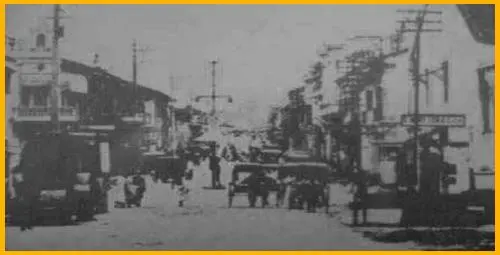
United Plantations started with the planting of rubber trees and subsequently went into coconut and oil palm. Interestingly in 1939, tea plantations were established at their Ulu Bernam Estate. The tea was packaged and sold on a commercial scale under the brand name of HornBill Tea. Tea production was phased out in 1971.
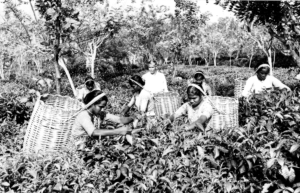
During the Japanese Invasion, one of the major battles fought was the Battle of Slim River. Japanese forces started the attack with tanks in the early morning of 7 January 1942 and five hours later, it was all over for the British and Indian forces. From here on, it was a straightforward march for the Japanese to Kuala Lumpur, which they captured on 11 January 1942. Frederick Spencer Chapman, a ‘stayed behind’ commando instructor was in T/M in the month of February 1942 and for a period of two weeks, became a real nuisance to the Japanese. Chapman and his team made daring raids as they harassed the Japanese and slowed them down. Their first raid was a bridge a mile south of the T/M railway station on 1 February 1942, followed the next day with a small girder bridge just south of Kampong Behrang train station. They also cut communication lines in the area. The demolition team was proving to be a handful that the Japanese held 2000 soldiers at T/M and Kuala Kubu Bharu to hunt them down. With no more supply of explosives, they left T/M on the night of 15 February 1942, which they learned much later was the day that Singapore fell to the Japanese. After the war, Chapman wrote about his four years spent in the Malayan jungle as a guerrilla fighter in a book entitled ‘The jungle is neutral’. During the Malayan Emergency (1948-1960), T/M was a hot spot for communist terrorists, who committed violence and acts of sabotage.
On 25 March 1952, a team of 5 civilians and 16 police personnel from the jungle squad went to a rubber estate located just outside of T/M to repair a water tank, which was sabotaged for the sixth time by communist terrorists. Upon arrival, the team was ambushed and 12 of them were killed including Micheal Codner (Assistant District Officer) and W.H. Fourmiss (Public Works Department engineer), eight were injured and only one survived, Yahya Paip who worked as the overseer. The killing at T/M made local and international headlines and it prompted the newly appointed High Commissioner General Templer to take immediate drastic action. A 22-hour curfew was imposed, schools closed, bus services stopped, a further reduction in rice ration and the town was cordoned with barbwires with the Home Guard manning the gates. This ‘collective punishment’ on the residents of T/M took effect on 27 March 1952. Hard as it may be, the exercise proved to work and the information received led the British to Kampung Simpang Ampat, which was close to the site of the killing; all 52 Malay families there were ordered to shift to a new settlement located behind SITC.
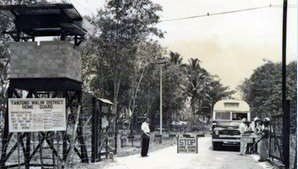
Photo source : http://www.arkib.gov.my/en/web/guest/arkib-negara-malaysia (Tanjong Malim / Home guard inspection center in Tanjong Malim)
On 16 March 1966, the first tolled highway in Malaysia went into operation – the Tanjong Malim-Slim River tolled highway on Federal Route 1/main trunk road. Buses and lorries were charged RM 1.00, cars 50 sen and motorcycles 20 sen. It subsequently reverted to a toll-free section with the opening of the Tanjong Malim-Tapah segment of the North South Expressway in October 1993.
On 11 January 2016, the Sultan of Perak, Sultan Nazrin Muizzuddin Shah, declared Muallim as the 11th district in Perak. The new district covers the mukim (small district) of Slim, Hulu Bernam Barat (west) and Hulu Bernam Timur (east); the towns include Slim, Behrang, Proton City and Tanjong Malim. Prior to this, the area was part of the Batang Padang district.
Places of Interest
Universiti Pendidikan Sultan Idris (Sultan Idris Education University, first started as Sultan Idris Training College / SITC)
Prior to SITC, there were two Malay training colleges, in Melaka (established in 1900) and Matang, Perak (1913). In 1916, Richard Olaf Winstedt (involved in the excavation of the first slab grave as mentioned above) was appointed as the Assistant Director of Education (Malay schools) and he was sent to Java and The Philippines to familiarize himself with the native schools there. Upon his return in 1917, he made several recommendations and reorganization of the Malay education system to the Government. Central to these was the setting up of SITC. On 26 May 1917, T/M was officially chosen as the location of the college because it met all the requirements i.e. fertile land, close to the railway network, roads and river networks and a population of moderate number. On the same day, Sultan Abdul Jalil consented to name the college Sultan Idris Training College in conjunction with the name of the late Sultan Idris Murshidul Azzam Shah, the 28th Sultan of Perak who ruled between 1889 and 1916.
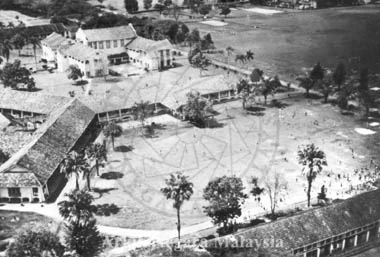
Construction work began in August 1919 on a 64 hectare land that was purchased for $49 000 and was completed in 1922. SITC was officially opened on 29 November 1922 by Sir George Maxwell who was then the Chief Secretary of the FMS. Oman Theodore Dussek was appointed as the first principal of SITC. Prior to this, he was the head of the Malay training college in Melaka. The first batch of 120 students came from the Straits Settlements and the FMS; they were all men. The academic programme consisted of ordinary schoolwork namely arithmetic, geography, language, history and Malay literature. Practical skills were learned through agriculture and handicraft.
Since its inception, SITC has gone through several name changes in accordance with its growing status as a teaching institution. The era of SITC ended in 1957 when it became known as Maktab Perguruan Sultan Idris (Sultan Idris Teachers College). The first batch of 140 female students was accepted on 13 January 1975. It was upgraded to an institute and was known as Institut Perguruan Sultan Idris (Sultan Idris Teachers Institute) on 21 February 1987. Its status as an institute ended when it was upgraded to university with the establishment of the Universiti Pendidikan Sultan Idris (Sultan Idris Education University) on 1 May 1997. At the start, there were only four faculties. Today, the number has increased to nine, offering Diploma and Degree programmes. In addition, the Institute of Postgraduate studies features Master and PhD programmes. UPSI’s main campus is the Sultan Abdul Jalil Shah campus located at T/M and the other is Sultan Azlan Shah campus located at Proton City. The latter was officially in operation on 20 February 2012.
National Education Museum
The National Education Museum is located inside the main campus of UPSI in T/M and is housed in the Suluh Budiman Building, which was the main building of SITC. The building, which had strong resemblance to the Notre Dame church in France and Salisbury in England, was designed by FMS architect, Leofric Kesteven, who also designed the Sultan Suleiman Royal Mosque in Klang. The building was gazetted as a National Heritage Building on 14 February 2009 and on 24 August of the same year work was carried out to convert it to a museum. It was completed in two years and on 19 July 2011, the museum was inaugurated by Her Majesty The Permaisuri of Perak, Tuanku Bainun. Today, the museum has 21 permanent exhibition galleries and one themed exhibition gallery that showcase the history of education in our country and the history of SITC.
One interesting exhibit is an ancient cannon. It was used by Raja Mahadi’s camp to fight Tengku Kudin during the Selangor Civil War. The cannon was a gift from the people of T/M to SITC during its inauguration. The museum is open on Monday to Friday and admission is free. There are also interesting attractions outside the museum like Za’ba House, The Great Bell, former Japanese armed forces punishment site, bullet holed pole, just to name a few.
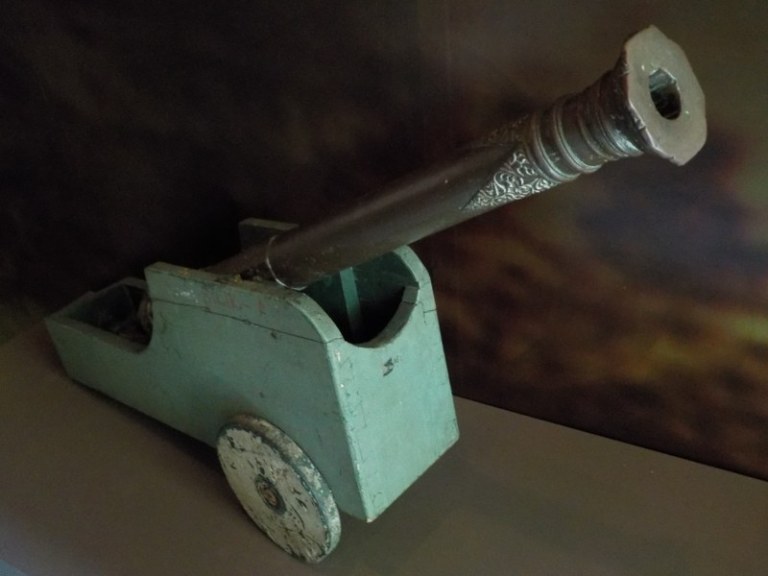
Old Town
Coming from Hulu Bernam town, after passing the bridge across (3) Sungai Bernam, leads to the Old Town of T/M. Immediately after the bridge on the right is (4) Kampung Kubu, the birthplace of T/M. The district office has put in effort to spruce up the place including installing information boards on the history of the town. If planning a trip here, this would be an ideal starting point. When the British came and brought development to T/M, the Chinese followed suit. They built two rows of shophouses at the centre of the town. Some of these buildings are more than a hundred years old and are still standing, located at (5) Jalan Besar.

Two of the streets in this section are named after Chinese pioneers i.e. (6)Jalan Loke Yew and (7) Jalan Chong Ah Peng. Loke Yew was synonymous with tin mining and commercial agriculture. He also had extensive influence in the FMS. He has a road named after him in many major towns including Kuala Lumpur, Ipoh, Taiping, Seremban, Kuantan, Bentong, Singapore and T/M. Loke Yew invested in rubber and coconut in T/M. Chong Ah Peng came to Malaya in 1895 in search of tin, which he found in abundance at a hill just south of T/M, in a town called Kalumpang. With his fortune, he developed the town by building shophouses, school, temple, bus station and police station. He also built shophouses in T/M. There is also a street named after Dato Haji Mustapha Bin Raja Kamala. (8) Jalan Haji Mustapha Raja Kamala, leads to Kampung Kubu.
Today, T/M railway station provides Komuter (Tanjong Malim to Port Klang route) and ETS (intercity) services. The (9) old railway station which is still intact is about 100 metres from the new station, has been converted to a restaurant. The (10) Rest House, which was a popular stop for VIPs in its early days is now completely devoid of life. It appears to have closed down.
We next look at religious architecture in the town, starting with (11) Church of the Most Holy Redeemer, a Roman Catholic church. The old church was built in 1960. In 2007, the current building was constructed and it started being used in August 2009. Located close to the Police Station on Jalan Besar is (12) Masjid Jamek. The first Masjid Jamek was located at Kampung Kubu. When SITC was set up, it was not able to accommodate the increasing pilgrims, so a new mosque was built in 1926 at the current site. It was designed by a British architect and it was officially opened by DYMM Paduka Sultan Iskandar Shah on 15 June 1926. Further down Jalan Besar, at the junction of Jalan Temoh (main trunk road), is a Hindu temple, (13) Sri Thandayuthapani Temple. Typical of a South Indian temple, it has a large gopuram (monumental tower) at the entrance of the temple and walls that surround the temple complex.
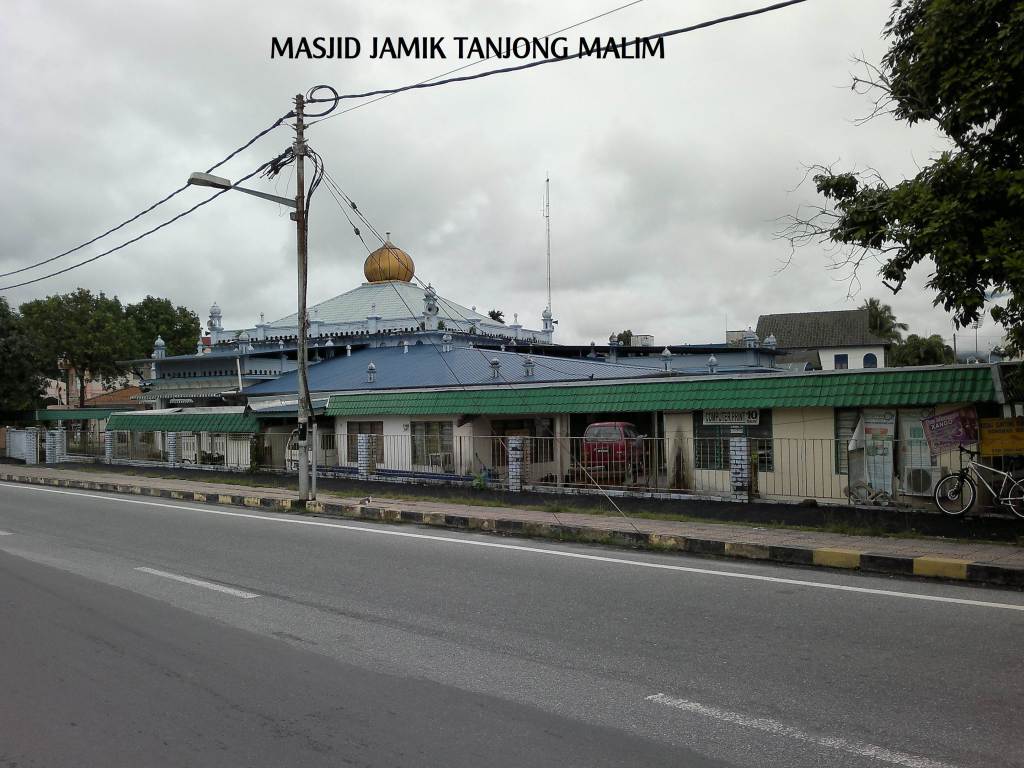
Past the junction, the connecting highway is Behrang-Tanjong Malim Highway/Federal Route 193, which was formerly Jalan Slim. Located on the left is the (14) Gudwara Sahib Tanjong Malim. The first building was located near the current site of the Catholic High School and when the Sikh community bought a piece of land, a new building (at the current site) was built in 1931 and was declared open in early 1932. It was demolished in July 2003 to make way for the present Gudwara. Weekly prayers are held on Sunday mornings 8.00 to 9.00 am. Last but not least is (15) Fook Pau Lin, a Buddhist Mahayana temple located at Jalan Segar Utama, Taman Segar. The temple organizes dharma talks and cultivation of anapanasati meditation.
Getting There
There are two main ways to get to Tanjong Malim by car. Use the tolled highway – the North South Expressway E1 and Exit 121 to Tanjong Malim. For toll free, use Federal Route 1, the main trunk road. Another option is to use the Komuter service, take the Tanjong Malim-Port Klang route.
In this Series
References
Frederick Spencer Chapman – The jungle is neutral – Published by Marshall Cavendish International (Asia) Pte Ltd – Publication date 2014 / 03.
Neil Khor – Loke Yew. A Malayan Pioneer – Published by Zamilyn Sdn Bhd – First edition 2019.
Sungai Bernam potential water source in Klang Valley, says Luas
Recent finds of more slab-graves in the Berman Valley, Peninsular, Malaysia
History & Milestones – United Plantations Berhad
AKSI DAN REAKSI: KEKEJAMAN KOMUNIS DI TANJUNG MALIM DAN TINDAK BALAS BRITISH, MAC-APRIL 1952
Muallim is now Perak’s 11th district
A Review of the Educational Developments in the Federated Malay States to 1939
Muzium Pendidikan Nasional – UNIVERSITI NO.1 PENDIDIKAN | NO.1 EDUCATION UNIVERSITY (about museum & view museum)
UPSI National Education Museum – Muzium Pendidikan Nasional
Cheong Ah Peng, the Father of Kalumpang – Museum Volunteers, JMM
A Visit to the National Education Museum (18 September 2017)
Church of The Most Holy Redeemer Tanjung Malim
Gurudwara Sahib Tanjong Malim, Perak – Gateway to Sikhism
https://www.orangperak.com/sejarah-dan-asal-usul-tanjung-malim.html

